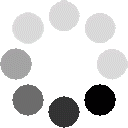Rights Contact Login For More Details
- Wiley
More About This Title Introducing Autodesk Maya 2012
- English
English
This book is the ideal primer to getting started with Maya, the premier 3D animation and effects software used in movies, visual effects, games, cartoons, short films, and commercials. You'll learn the Maya interface and the basics of modeling, texturing, animating, and visual effects. Professional visual effects artist and instructor Dariush Derakhshani explains the nuances of the complex software, while creative tutorials offer realistic, professional challenges for those new to 3D. You'll be up and running in no time with the world's most popular professional 3D software application.
Provides a thorough, step-by-step introduction to Maya 2012Explains the core concepts of CG and working in 3DCovers modeling, rigging, HDRI lighting, mental ray rendering, and moreConcepts are reinforced with tutorials that offer realistic challenges and clear explanationsColor insert provides real-world examples from talented beginning Maya usersBuild your Maya and animation skills from the ground up with this practical, thorough guide.
- English
English
- English
English
Chapter 1 Introduction to Computer Graphics and 3D 1
Art? 2
Computer Graphics 2
The Stages of Production 4
The CG Production Workflow 8
Core Concepts 11
Basic Film Concepts 23
Summary 28
Chapter 2 Jumping in Headfirst, with Both Feet 31
You Put the U in UI 32
Project Overview: The Solar System 37
The Preproduction Process: Planning 37
Creating a Project 38
The Production Process: Creating and Animating the Objects 40
Hierarchy and Maya Object Structure 53
The Solar System Resumed 56
Outputting Your Work: Playblasting 64
Summary 66
Chapter 3 The Maya 2012 Interface 67
Navigating in Maya 68
Maya's Layout 68
Building a Decorative Box 82
Mapping the Box's Reference Planes with Hypershade 86
Organizing Workflow with Layer Editor 90
Modeling the Decorative Box 92
Editing the Decorative Box Model Using the Shelf 98
Continuing the Decorative Box Model 103
Finishing the Decorative Box Model 106
Summary 113
Chapter 4 Beginning Polygonal Modeling 115
Planning Your Model 116
Polygon Basics 119
Poly Editing Tools 121
Putting the Tools to Use: Making a Simple Hand 125
Creating Areas of Detail on a Poly Mesh 131
Modeling a Classic Steam Locomotive 139
Suggestions for Modeling Polygons 163
Summary 163
Chapter 5 Modeling with NURBS, Subdivisions, and Deformers 165
NURBS! NURBS! 166
Using NURBS Surfacing to Create Polygons 178
Converting a NURBS Model to Polygons 180
Editing NURBS Surfaces 181
Patch Modeling: A Locomotive Detail 183
Using Artisan to Sculpt NURBS 194
Modeling with Simple Deformers 196
The Lattice Deformer 200
Animating through a Lattice 205
Subdivision Surfaces 208
Creating a Starfish 208
Building a Teakettle 213
Summary 221
Chapter 6 Practical Experience 223
Beginning the Wagon Project 224
Modeling the Side Panels 232
Creating the Wagon Body 253
Modeling the Wheels 262
Making the Wood Railings 268
Adding Extra Details 277
Summary 284
Chapter 7 Maya Shading and Texturing 285
Maya Shading 286
Shader Types 286
Shader Attributes 290
Texturing the Axe 294
Textures and Surfaces 301
Textures and UVS for the Red Wagon 310
Photoreal Mapping: The Decorative Box 343
For Further Study 360
Summary 360
Chapter 8 Introduction to Animation 363
Keyframe Animation—Bouncing a Ball 364
Throwing an Axe 375
Replacing an Object 392
Animating Flying Text 393
Rigging the Locomotive, Part 1 398
Animating a Catapult 401
Summary 406
Chapter 9 More Animation! 409
Skeletons and Kinematics 410
Skeletons: The Hand 423
Inverse Kinematics 436
Basic Relationships: Constraints 441
Basic Relationships: Set-Driven Keys 445
Application: Rigging the Locomotive 448
Summary 455
Chapter 10 Maya Lighting 457
Basic Lighting Concepts 458
Maya Lights 462
Light Linking 468
Adding Shadows 469
Raytracing Soft Shadows 473
mental ray Lighting 474
mental ray Physical Sun and Sky 476
Lighting Effects 481
Lighting the Decorative Box 485
Further Lighting Practice 490
Tips for Using and Animating Lights 491
Summary 493
Chapter 11 Maya Rendering 495
Rendering Setup 496
Previewing Your Render: The Render View Window 505
Reflections and Refractions 507
Using Cameras 509
Motion Blur 515
Batch Rendering 515
Rendering the Wine Bottle 516
mental ray for Maya 520
Render Layers 525
Final Gather 534
Ambient Occlusion 537
HDRI 544
Rendering the Decorative Box 546
Summary 560
Chapter 12 Maya Dynamics and Effects 561
An Overview of Dynamics and Maya Nucleus 562
Rigid and Soft Dynamic Bodies 562
Animating with Dynamics: The Pool Table 566
nParticle Dynamics 575
Emitting nParticles 576
Animating a Particle Effect: Locomotive Steam 581
Introduction to Paint Effects 588
Toon Shading 592
Customizing Maya 595
Summary 599
Where Do You Go from Here? 599
Index 601

